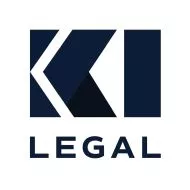In December 2020, Congress passed the Consolidated Appropriations Act, ("CAA-21") which was signed into law by former President Donald Trump on December 27, 2020. CAA-21 provided stimulus and other economic relief programs to help struggling businesses and individuals affected by the Covid-19 pandemic. Relief under the CAA-21 took many forms and extended into several sectors, including the financial, real estate, employee rights, energy and infrastructure, and intellectual property sectors. This article focuses on CAA-21's amendments to the Bankruptcy Code and the financial benefits it made available to qualified borrowers, ultimately addressing its implications in the bankruptcy context today nearly three years later.
First, let's take a brief look at some of the finance provisions that were enacted or extended by CAA-21. The Coronavirus Aid, Relief, and Economic Security Act ("CARES Act") established the Paycheck Protection Program ("PPP") which is an SBA-backed loan that helped businesses keep their workforces employed during the pandemic. CAA-21 extended the PPP through March 31, 2021, and allocated an additional $284 billion for PPP loans. CAA-21 provided for second draw PPP loans up to $2 million for eligible borrowers. CAA-21 additionally appropriated $15 billion for a new SBA program of grants for operators of shuttered venues, including movie theaters, live theaters, performing arts venues, and other cultural institutions. Finally, CAA-21 provided Economic Injury Disaster Loan grants ("EIDL"), which infused capital into businesses which were substantially affected by the pandemic. EIDL is an expansion of the existing SBA Economic Injury Disaster Loan Program ("EIDLP"), and in contrast to the PPP loans, is not forgivable; as a result, it has posed, and continues to pose, interesting issues for personal guarantors, which were required with loans in excess of $200,000 and above.
Next, CAA-21 amended certain provisions of the Bankruptcy Code to alleviate some of the burdens caused by the pandemic. Section 364 of the Bankruptcy Code was amended to provide that bankruptcy courts may authorize subchapter V, Chapter 12, and Chapter 13 debtors to obtain a loan under the PPP, so long as certain conditions precedent are satisfied. Section 365(d)(4) of the Bankruptcy Code was amended to extend the time a debtor has to assume or reject its lease of nonresidential real property from 120 days to 210 days. Sections 501 and 502 were amended to establish a procedure for creditors to file claims in a debtor's bankruptcy case for amounts claimed due to mortgage forbearance periods imposed by the CARES Act. Section 541(b)(11) exempted economic relief payments from being treated as property of a debtor's estate. Finally, section 547 prevented a trustee from recovering as a preference payment, any deferred payments made by a debtor after March 13, 2020 to its landlord for rent, and to suppliers for goods or services.
In bankruptcy, SBA lenders and the SBA are treated as unsecured creditors who are not afforded a statutory priority under the Bankruptcy Code for PPP loans issued prepetition. Debtors classify PPP loans as unimpaired general unsecured claims under Chapter 11 plans of reorganization, providing for their reinstatement on the plan effective date. Alternatively, PPP loan claims have also been treated as impaired general unsecured claims to be forgiven in their entirety under the plan. Counsel for debtors must analyze whether a PPP borrower will qualify for loan forgiveness in analyzing distribution and classification strategies for a plan. EIDL debt is treated differently in bankruptcy and depends on the amount borrowed. If a closing business borrowed $25,000 or less, a bankruptcy filing may not be necessary because there is little that the SBA can do to recover on the loan. If the loan was between $25,000 and $200,000, it was a secured loan, which means that the business's assets were pledged as collateral to secure the loan. A default on the loan obligations could result in the SBA seeking to obtain possession of assets. A bankruptcy filing may be a viable option for borrowers in this pool. Finally, if your loan through the EIDL program was greater than $200,000, the loan is likely secured by the business's assets and further secured by a personal guaranty. In these circumstances, speaking with a bankruptcy attorney is recommended to explore available options.
This article is a cursory overview of the CAA-21's lingering effects.
The content of this article is intended to provide a general guide to the subject matter. Specialist advice should be sought about your specific circumstances.

